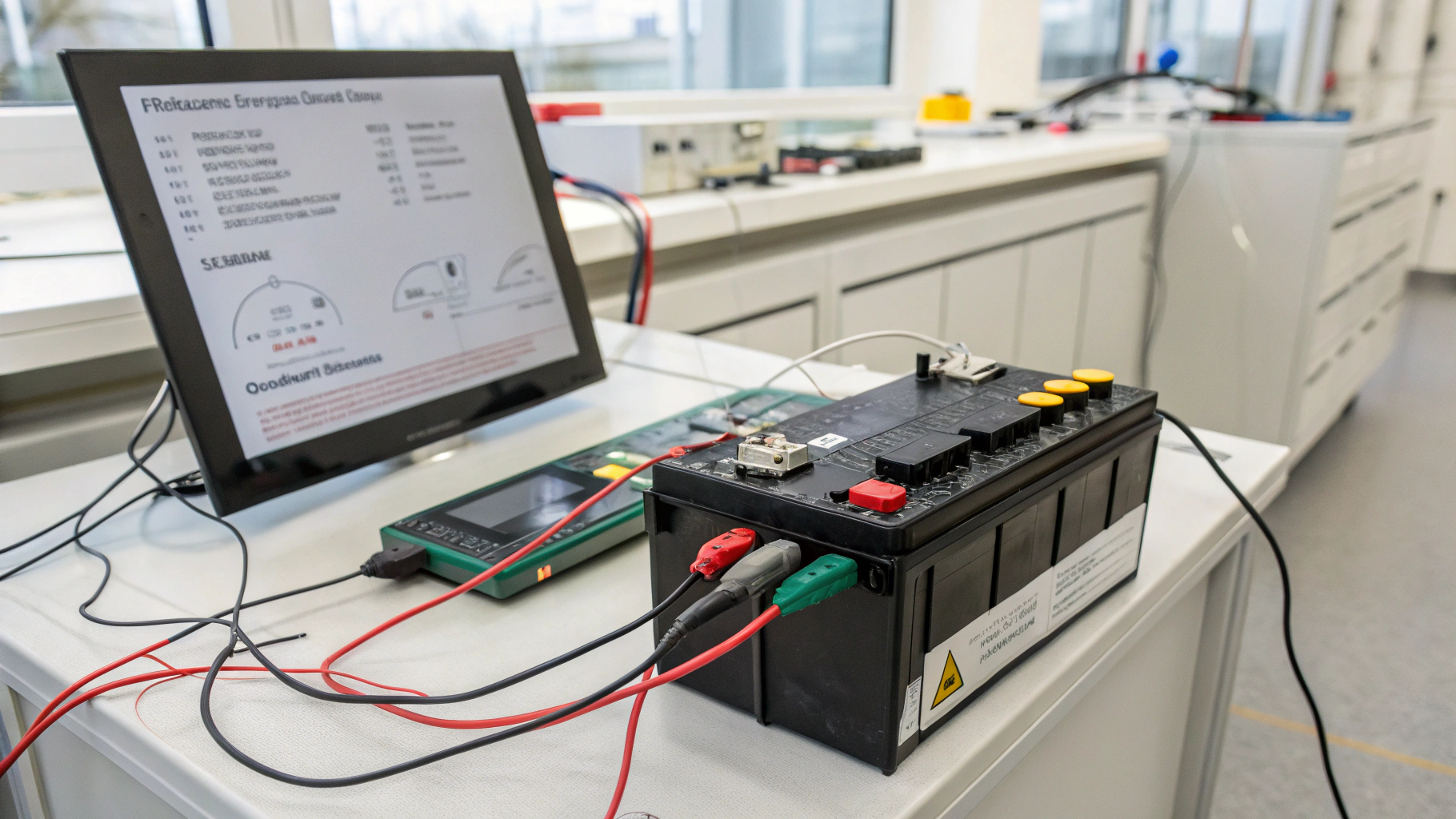
The first time I became aware of the potential hazards associated with lithium-ion batteries, particularly the risk of overcharging, I was truly taken aback. I had always perceived these batteries as virtually infallible until I stumbled upon alarming news reports regarding fires sparked by overheating batteries. This revelation compelled me to delve deeper into the phenomenon of overcharging lithium-ion batteries and explore preventive measures against such dangers.
Understanding the risks tied to overcharging lithium-ion batteries is pivotal, especially the crucial fact that the voltage across each cell must not exceed 4.2 volts during charging. Overcharging can not only escalate the battery temperature, leading to catastrophic thermal runaway, but it can also result in swelling or rupture of the battery, potentially igniting fires or even causing explosions. Additionally, lithium ions have the propensity to form dendritic structures, which can provoke internal short circuits, significantly jeopardizing both the lifespan and safety of the battery. Fortunately, the modern iteration of lithium-ion batteries is equipped with built-in protection circuits known as Battery Management Systems (BMS). These advanced systems effectively monitor voltage and temperature, thereby substantially mitigating the risk of overcharging.
Nevertheless, ensuring battery safety extends beyond solely depending on these technological safeguards. Employing compatible chargers, avoiding prolonged unattended charging sessions, and ensuring that charging occurs in appropriate environmental conditions are vital steps in preventing overcharging incidents. In summary, while the protective circuits integrated into lithium-ion batteries significantly diminish the risk of overcharging, adhering to sound charging practices remains essential for ensuring battery safety. I hope these insights will enable you to use these batteries with enhanced peace of mind. Give these tips a try, and I’m confident you’ll notice a positive difference.
Lithium-ion batteries are completely immune to overcharging risks.False
Lithium-ion batteries can be overcharged, leading to safety hazards.
Lithium-ion batteries must not exceed 4.2 volts during charging.True
Exceeding 4.2 volts can cause overheating and safety failures.
What Does Overcharging Mean and What Are Its Risks?

As I embarked on my journey to uncover the intricate ways technology weaves itself into the fabric of our daily lives, I encountered a revelation: the understated yet crucial role played by lithium-ion batteries. These energy reservoirs power our beloved gadgets, prompting an intriguing question to surface: is it possible to overcharge a lithium-ion battery? The answer, as I discovered, is a tapestry of both critical knowledge and complexity.
Deciphering the Overcharging Phenomenon in Lithium-Ion Batteries
My exploration revealed that the concept of overcharging a battery is far from simplistic. When it comes to lithium-ion batteries, overcharging entails exceeding their designed maximum charge capacity—a practice fraught with potential peril. The repercussions? They can vary widely, encompassing anything from a frustrating decline in battery longevity to more severe dangers like thermal runaway. This alarming situation arises when a battery overheats to the point of potential combustion. Such an occurrence threatens not just personal safety but can also wreak havoc on the device’s electrical systems, possibly necessitating expensive repairs or replacements.
From my vantage point, the stakes associated with overcharging are starkly evident. To sustain the health and safety of these batteries, it’s imperative to utilize appropriate charging equipment and to be well-versed in your device’s charging functions. I strongly advise consulting your device’s specifications and using original chargers to steer clear of these daunting pitfalls. This seemingly minor decision could preempt major complications further down the line.
Summary of Key Insights: Through my experiences, it’s clear that lithium-ion batteries are indeed prone to overcharging, which can precipitate diminished battery lifespan, safety risks like thermal runaway, and impairment of device electrical systems.
So, as you connect your cherished gadget to a power source next time, hold onto these insights. They might just spare you from a world of frustration and expense. I trust that this knowledge proves as advantageous for you as it has been for me.
Understanding Overcharging in Lithium-Ion Batteries and Its Associated Risks
As I dove deeper into the world of lithium-ion batteries, I grappled with the reality of overcharging—a phenomenon that enhances the risks to our devices. Overcharging occurs when the battery exceeds its designed charge capacity, leading to issues like reduced lifespan and even dangerous thermal runaway. This critical information underscored the importance of using the right charging equipment to protect both the battery health and user safety.
| Key Insight | Description |
|---|---|
| Overcharging Defined | Exceeding the maximum charge capacity of lithium-ion batteries. |
| Impacts on Battery Lifespan | Overcharging leads to a significant decline in the battery’s usable life. |
| Safety Risks | Thermal runaway can occur, posing fire risks and device damage. |
| Prevention Strategies | Utilize original chargers and understand device specifications. |
Lithium-ion batteries cannot be overcharged under any circumstances.False
This is false; lithium-ion batteries can indeed be overcharged, posing risks.
Using original chargers helps prevent lithium-ion battery overcharging.True
This is true; original chargers are designed to prevent overcharging risks.
Defining Overcharging in Lithium-Ion Batteries
The perilous act of overcharging lithium-ion batteries is a phenomenon that warrants vigilance. When the voltage exceeds permissible limits, it triggers dire consequences, including diminished efficacy, thermal runaway, and catastrophic explosions. Grasping the intricacies of lithium-ion battery behavior is paramount for ensuring safety. To mitigate such hazards, contemporary battery management systems strictly adhere to established charging protocols. Safe charging practices, such as avoiding prolonged periods of charging, using appropriate chargers, and maintaining optimal environmental conditions, are vital. Navigating these nuances not only preserves battery lifespan but also augments performance, thereby protecting this pervasive technology.
The Dangers of Temperature Increase
Escalating global temperatures present significant perils that traverse multiple domains. The imminent menace of this thermal ascent manifests across health, ecosystems, and various geographical locales, each grappling with unparalleled challenges. Health repercussions, such as intensified respiratory ailments and heat-induced disorders, are particularly alarming. Moreover, the ecological ramifications manifest in the disruption of delicate ecosystems, jeopardizing biodiversity and endangering countless species. Regions acutely susceptible to this climactic shift must swiftly strategize for adaptation. Hence, the implementation of effective mitigation tactics is essential, as comprehending these climate-induced risks is vital for humanity’s sustainable evolution and the preservation of ecological integrity.
Gas Formation and Dendrite Development
In the realm of metal solidification, the interplay between gas evolution and dendritic formation assumes paramount importance. The liberation of gas not only shapes dendrite architecture but can also precipitate the formation of gas pores within the metal matrix. By probing the mechanisms of dendritic growth under various conditions, one reveals a complex relationship where gas emissions during solidification intricately influence the formation of solid-state dendrites. This interaction ultimately dictates the microstructural characteristics of the final solidified product. A deeper exploration into the dendritic crystalline frameworks unveils defects instigated by gas, illuminating how phase transformations govern dendrite morphology. Consequently, strategically managing gas release becomes essential to mitigate its deleterious effects on dendritic development.
How Do Built-in Protection Circuits Work?
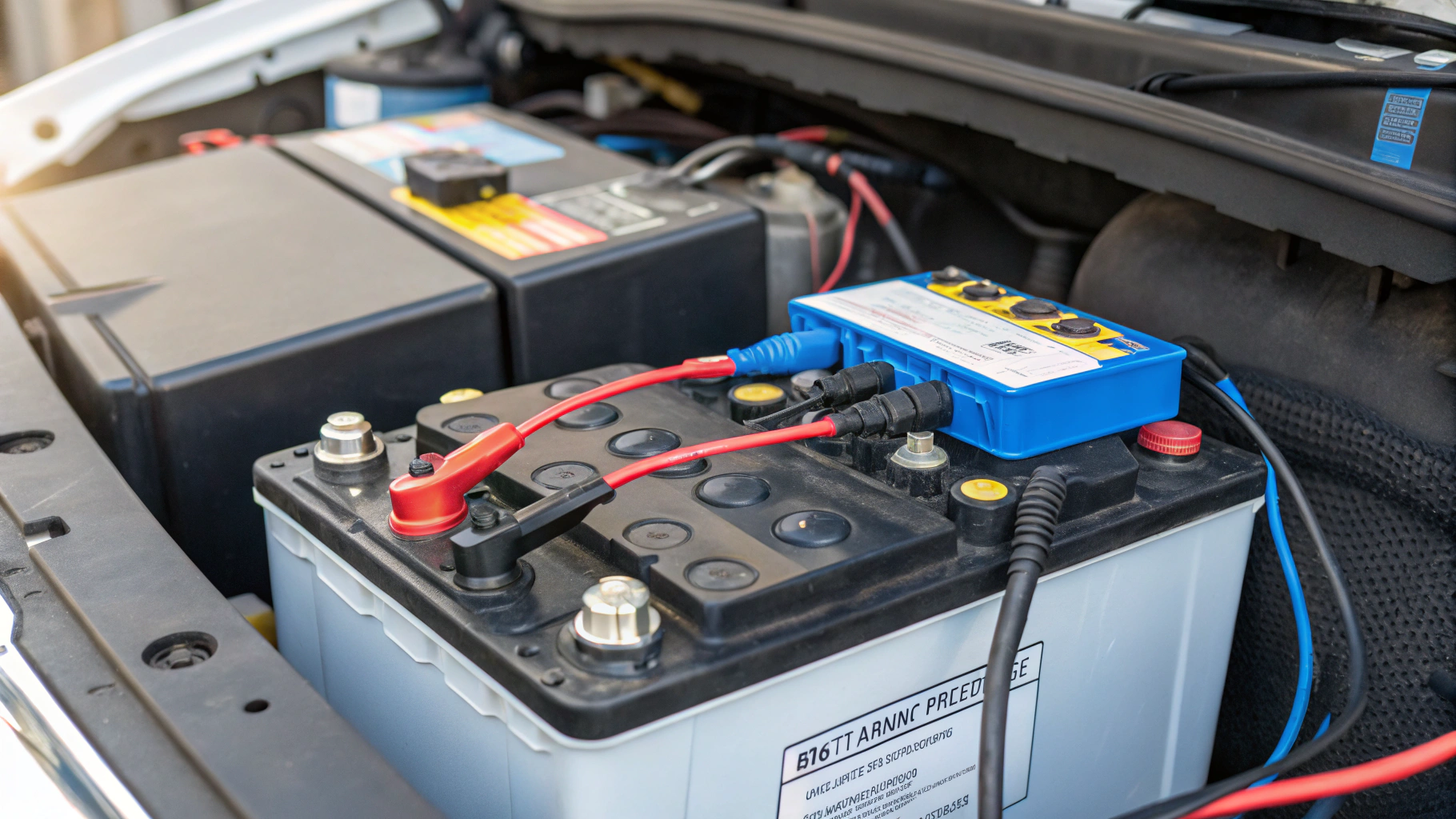
When I first stumbled upon the question, “Can lithium-ion batteries be overcharged?” I found myself in a state of confusion. It’s a query that frequently surfaces, especially in today’s world where virtually everything is driven by these compact energy reservoirs. Upon exploring this topic further, I’ve come to appreciate the critical role that built-in protection circuits play in safeguarding lithium-ion batteries. These circuits serve as silent sentinels, diligently preventing overcharging, excessive discharging, and short-circuiting.
Picture this: waking up only to discover that your phone feels as hot as a skillet. Thankfully, such a nightmarish scenario was averted for me, all thanks to the overcharge protection mechanisms embedded within the battery. With innovations like lithium battery protection circuits, circuit breakers, and ESD protection features, these systems stand ready to intervene whenever things veer off course—whether due to elevated temperatures or excessive current flow—ensuring the fragile inner workings of the battery remain unharmed.
For those of you intrigued by this topic, here’s the crux of the matter: lithium-ion batteries boast advanced built-in protection circuits explicitly designed to avert overcharging while extending their lifespan and ensuring safety. If you share my concerns, you may find solace in knowing that these protective measures are actively at play. I encourage you to consider these safeguards the next time you reflect on the safety of your electronic devices—your peace of mind could depend on their effectiveness.
Understanding the Functionality of Built-in Protection Circuits in Lithium-Ion Batteries
Did you know that built-in protection circuits are crucial in safeguarding lithium-ion batteries from overcharging? As I delved into this topic, I realized these circuits function as vital defenders, preventing potential hazards like overheating and excessive discharge, thus ensuring both the longevity and safety of our devices.
| Feature | Description |
|---|---|
| Overcharge Protection | Prevents the battery from being charged beyond its safe limits. |
| Excessive Discharge Prevention | Stops the battery from being discharged too deeply, which can damage cells. |
| Short-Circuit Protection | Automatically interrupts the connection during a short circuit. |
| Temperature Regulation | Monitors and regulates temperature to prevent overheating. |
| Current Control | Manages current flow to prevent damage from excessive current. |
Lithium-ion batteries lack protection circuits against overcharging.False
This statement is false; lithium-ion batteries have built-in protection circuits to prevent overcharging.
Protection circuits in lithium-ion batteries help extend their lifespan.True
This statement is true; these circuits prevent damage and enhance battery longevity.
Understanding Battery Management Systems (BMS)
The Battery Management System (BMS) plays an indispensable role in fine-tuning battery efficacy. But, what precisely constitutes a BMS? It is a sophisticated assembly of technologies adept at overseeing battery health, charging mechanisms, and safety protocols. Integral elements such as sensors and microcontrollers facilitate comprehensive management of battery longevity. Particularly pivotal in electric vehicles and renewable energy sectors, BMS enhancements bolster battery safety and durability. As smart battery systems evolve, the prospects of BMS herald enriched analytics for exceptional performance optimization, underscoring its significance in the pursuit of energy sustainability.
Role of Protection Circuits in Preventing Overcharge
In the energy storage domain, protective circuits stand as a formidable shield against the perils posed by overcharging batteries. The criticality of overcharge prevention cannot be understated, as it relies on intricate circuit protection technologies. These essential components of battery management systems seamlessly integrate overcharge prevention devices with overvoltage safeguards. Sophisticated electronic protection systems guarantee that charge management remains within safe parameters. Lithium battery protection circuits epitomize cutting-edge design, significantly reducing overcharge hazards. Consequently, these electrical safeguards are crucial for ensuring resilient power management.
Limitations and Reliability of Protection Mechanisms
While protection mechanisms are indispensable, they carry intrinsic constraints. The complex dynamics of security reliability illuminate system vulnerabilities, calling into question their overall sturdiness. A thorough appraisal of these safeguards unveils frailties, thereby opening avenues for enhancement. The efficacy of defensive measures frequently encounters obstructions from these limitations. A meticulous scrutiny of security frameworks underscores the imperative for perpetual assessment of protective strategies. To fortify reliability, adaptive approaches must emerge, rendering the comprehension of security system limitations essential to bolster protective efficacy and reinforce overarching security frameworks.
What Measures Can Prevent Overcharging?
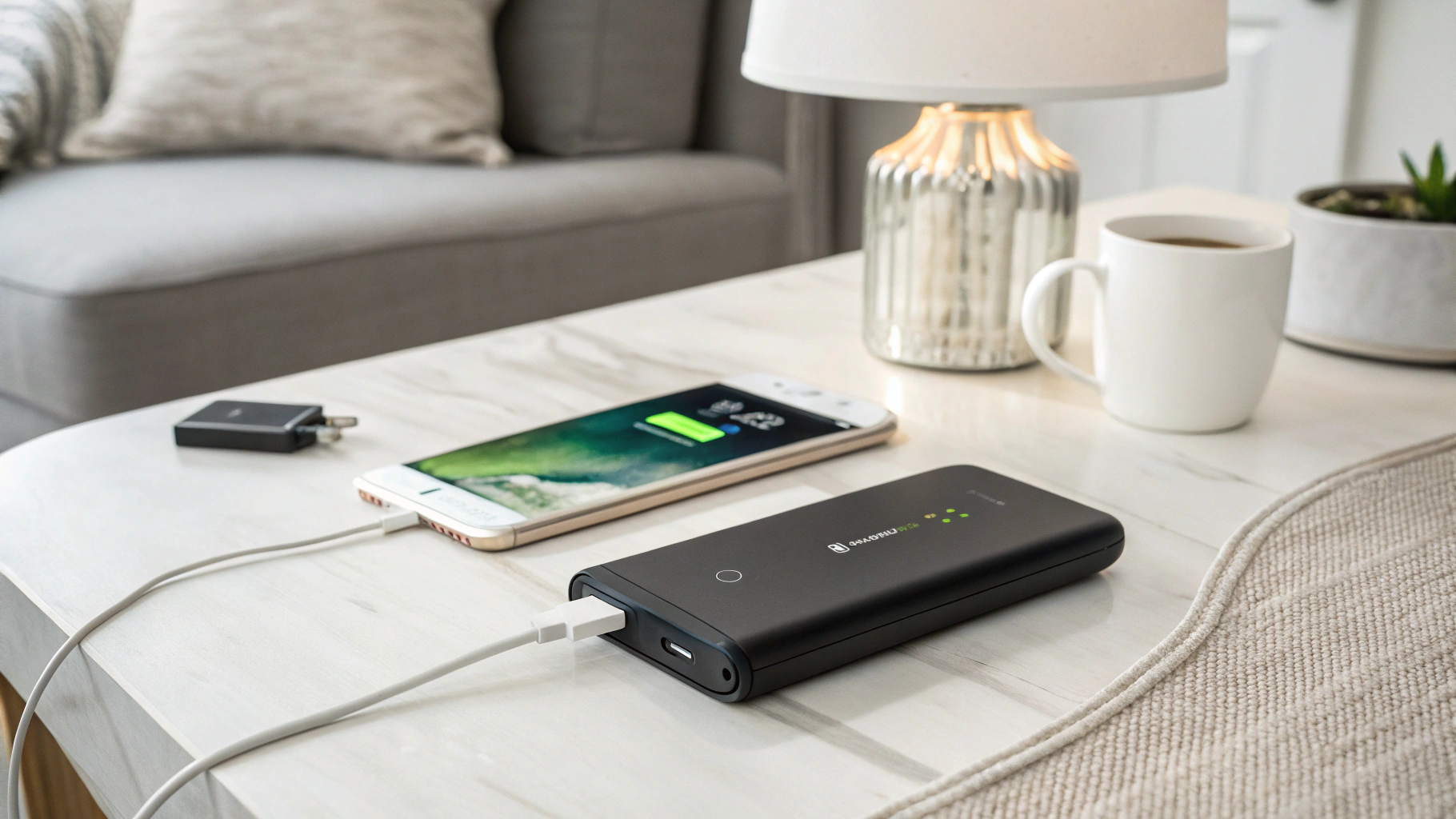
I distinctly recall the moment that stirred my curiosity: “Is it possible for lithium-ion batteries to be overcharged?” It was during one of those late-night sessions when I watched my phone’s battery percentage creep toward 100%. As I gazed, a persistent concern began to gnaw at me. Overcharging—a term that resonates with many of us—loomed large in my mind. Yet, there’s no need to panic; I’ve unearthed several practical strategies that may effectively safeguard our cherished devices from such a predicament.
As I explored this issue further, I stumbled upon the marvels of smart charging technology, which proved to be a genuine game-changer. Investing in a smart charger embedded with a microprocessor has quelled many of my fears. These innovative devices automatically sense when a battery reaches its full capacity and promptly halt the power supply. Consequently, I can rest easy, knowing that overcharging is no longer a concern. Furthermore, I’ve adopted another technique—setting a charging limit—which has become one of my go-to strategies. I aim to keep my battery operating within a range of 20% to 80%, which, based on my observations, seems to prolong its lifespan.
Let me share a nugget of wisdom that I adhere to religiously: I exclusively use original chargers and high-quality accessories. These trustworthy options have never failed me. By diligently monitoring my charging duration and performing routine checks on my battery’s health, I’ve effectively circumvented potential issues, ensuring my gadgets remain in peak condition.
In conclusion, while it is accurate that lithium-ion batteries can indeed suffer from overcharging without proper management, the adoption of preventive measures—such as utilizing smart charging, enforcing charge limits, and adhering to sound charging habits—can lead to optimal battery health and longevity. Try implementing these strategies, and believe me, you’ll notice a remarkable difference.
Effective Strategies to Prevent Lithium-Ion Battery Overcharging
I vividly remember the late-night anxiety of watching my phone battery inch towards 100% and wondering, “Can lithium-ion batteries actually be overcharged?” Fortunately, there are practical measures we can take to protect our devices. These include using smart charging technology, which automatically halts power when the battery is full, and setting a charging limit of 20% to 80% to enhance battery lifespan. By following these strategies and using quality chargers, I’ve successfully maintained optimal battery health.
| Preventive Measure | Description | Benefits |
|---|---|---|
| Smart Charging Technology | Chargers with microprocessors that detect full battery capacity. | Automatically stop charging to prevent overcharging. |
| Charging Limits | Maintaining a charge between 20% and 80%. | Helps extend battery lifespan. |
| High-Quality Chargers | Using original and reliable charging accessories. | Ensures safe and effective charging. |
| Regular Battery Maintenance | Monitoring charging durations and battery health. | Avoids potential battery-related problems. |
Lithium-ion batteries cannot suffer from overcharging issues.False
Overcharging can occur if batteries aren’t managed properly, affecting lifespan.
Using smart chargers helps prevent overcharging lithium-ion batteries.True
Smart chargers detect full capacity and stop charging, enhancing safety.
Using Compatible Chargers for Safety
In today’s digital landscape, safeguarding electrical integrity through compatible chargers is of utmost importance. The adoption of appropriate chargers significantly diminishes hazards associated with ill-suited options, such as overheating and potential device destruction—concerns that cannot be downplayed. Charger compatibility stands as the cornerstone of secure device functionality. To select the most suitable charger, referring to a compatibility guide is vital. Make it a priority to embrace charger safety practices; equip yourself wisely for optimal safety in your charging endeavors.
Monitoring Charging Conditions
Within the domain of battery innovation and electric mobility, scrutinizing charging parameters is of utmost importance. The interplay of real-time charging conditions and vigilant monitoring constitutes the very essence of intelligent charging systems. Such synergies not only bolster battery performance but also refine the efficacy of the charging process. The rise of renewable energy sources, notably solar power, has disrupted conventional paradigms. In this context, diligent battery health assessments become crucial. Ultimately, a sophisticated charging management framework with an emphasis on infrastructure scrutiny offers unparalleled insights into the intricacies of charging condition evaluation. Embrace the future by adopting comprehensive monitoring systems for maximized outcomes.
Guidelines for Safe Charging Practices
In the contemporary digital landscape, embracing prudent charging habits is essential. Grasping the nuances of safe device charging can avert a plethora of hazards, ranging from battery overheating to the dire threat of electrical fires. By adhering to optimal smartphone charging practices—such as employing correct techniques and choosing trustworthy power banks—you significantly bolster the safety of lithium-ion batteries. Select credible charger suggestions to guarantee their secure operation at home, while vigilantly overseeing the charging process. Upholding prescribed battery charging protocols not only mitigates damage but also fortifies both your devices and household from lurking dangers.
What Is Special About LiFePO4 Batteries?
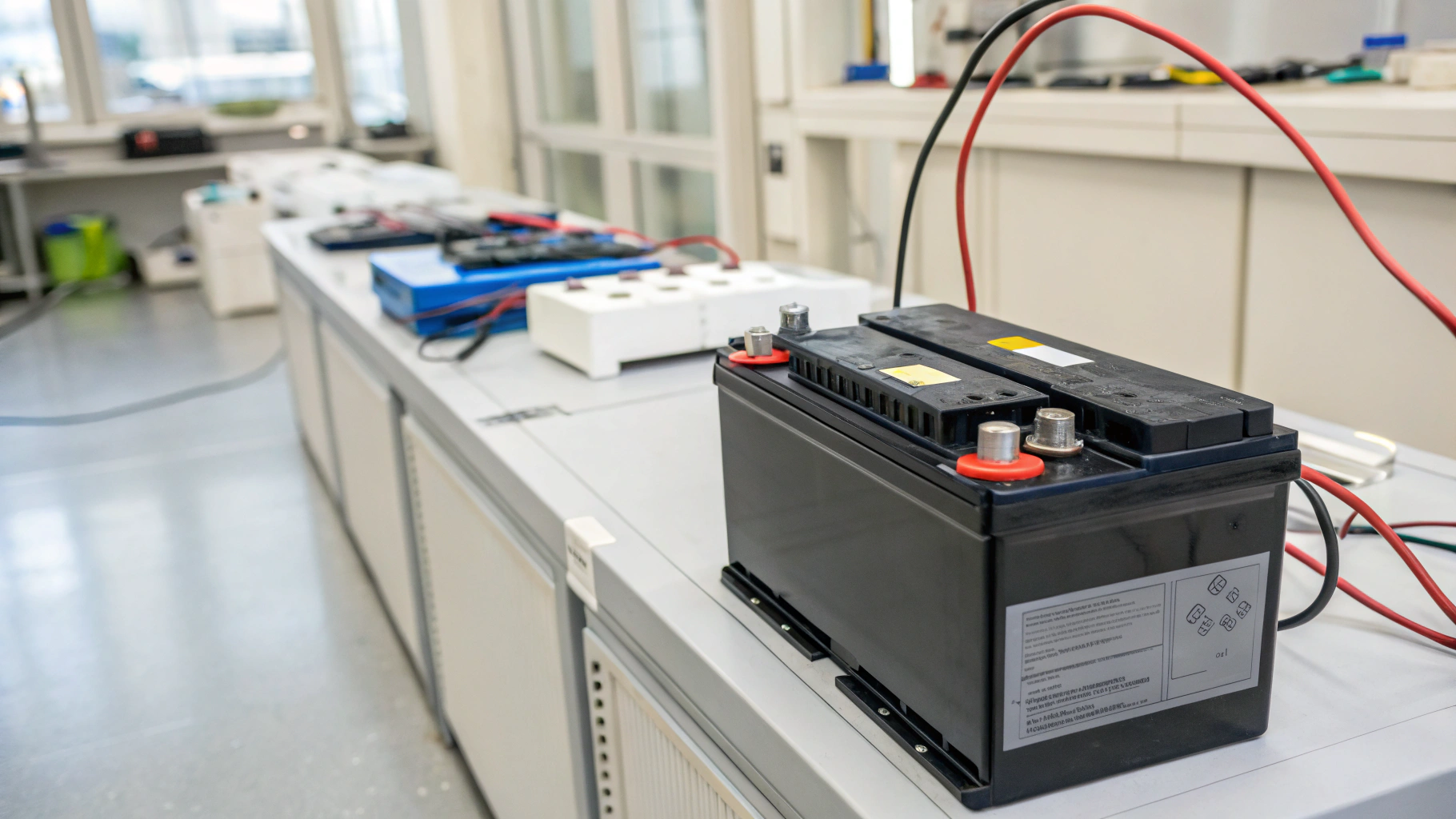
When I first encountered the question of whether lithium-ion batteries can be overcharged, I found myself irresistibly intrigued. It seemed that my friends held diverse opinions on the matter, which encouraged me to delve deeper into the subject. It’s widely acknowledged that lithium iron phosphate (LiFePO4) batteries stand out in this realm, thanks to their remarkable longevity and minimal degradation—advantages that extend beyond the typical 1,000 to 10,000 charge-discharge cycles, coupled with an impressive tolerance to high temperatures.
Moreover, the safety, environmental friendliness, and rapid charging capabilities of these batteries are nothing short of impressive. I also discovered that these batteries boast exceptional chemical and thermal stability, enabling them to maintain a high level of safety even under overcharge conditions. Thus, it becomes evident that LiFePO4 batteries are recognized as some of the safest lithium-ion batteries available today.
In my perspective, the combination of environmental friendliness and elevated safety makes LiFePO4 batteries not only technologically superior but also an astute choice when it comes to applications such as electric vehicles and solar energy systems. I hope that by sharing this information, I can enhance your understanding of the benefits these batteries offer. If you’re contemplating which battery to choose for your devices, why not give LiFePO4 a try? I have no doubt that you will appreciate its safety and performance.
Exploring the Advantages of LiFePO4 Batteries in Modern Applications
Did you know that lithium iron phosphate (LiFePO4) batteries can endure between 1,000 to 10,000 charge-discharge cycles while demonstrating remarkable safety? I found this aspect particularly fascinating during my research, as it highlights their longevity, minimal degradation, and exceptional thermal stability. With their ability to tolerate high temperatures and a reduced risk of overheating, LiFePO4 batteries are distinguished as one of the safest options within lithium-ion technology.
| Feature | Description |
|---|---|
| Cycle Life | 1,000 to 10,000 charge-discharge cycles |
| Temperature Tolerance | Impressive heat resistance |
| Safety | Exceptional stability, safe under overcharge conditions |
| Environmental Impact | Eco-friendly materials and components |
| Charging Speed | Rapid charging capabilities |
Lithium iron phosphate batteries degrade rapidly after 100 cycles.False
LiFePO4 batteries are known for longevity over 1,000 to 10,000 cycles.
LiFePO4 batteries are recognized for their high safety under overcharge.True
These batteries maintain safety levels even in overcharge conditions.
Stability and Safety of LiFePO4 Batteries
LiFePO4 batteries herald a new era in power storage, celebrated for their unparalleled safety and stability. This remarkable stability, bolstered by advanced thermal management and groundbreaking safety innovations, positions them as a premier option across diverse applications. In contrast to conventional lithium-ion batteries, their impressive durability and longevity stand out as significant benefits of lithium iron phosphate technology. Furthermore, their limited environmental footprint heightens their allure. As advancements in LiFePO4 evolve, upholding rigorous safety standards becomes imperative—ensuring both optimal performance and the safeguarding of user experiences.
Effects of Overcharging on LiFePO4 Characteristics
Immoderate charging of LiFePO4 batteries presents considerable perils to their efficacy and lifespan. The incursion of overvoltage disrupts the intricate chemistry of lithium iron phosphate, precipitating a decline in its fundamental attributes. This disruption jeopardizes thermal stability, escalating safety hazards. It is crucial to adhere strictly to established charging protocols and employ lithium battery management systems to counteract the deleterious impacts of overcharging. Implementing robust overcharge protection for LiFePO4 batteries fortifies their cycle life and performance, ensuring longevity amidst the subtle dangers posed by overcharging.
Comparative Risks with Other Lithium-Ion Batteries
Within the sphere of energy retention, the perils associated with lithium-ion batteries warrant meticulous investigation. A comparative analysis exposes a complex web of safety concerns entwined with these powerhouses. The multifaceted nature of lithium battery hazards underscores the crucial need for robust safety measures. By engaging in a thorough comparison of lithium-ion battery safety, one can discern their merits; nevertheless, alternative battery technologies unveil unique hazard profiles. Delving into battery safety assessments enriches our comprehension, particularly regarding electric vehicle batteries, while the diverse types of lithium batteries and their lifecycle risks call for relentless scrutiny to elevate safety ratings and optimize performance.
What Is the Summary on Overcharging and Safety?
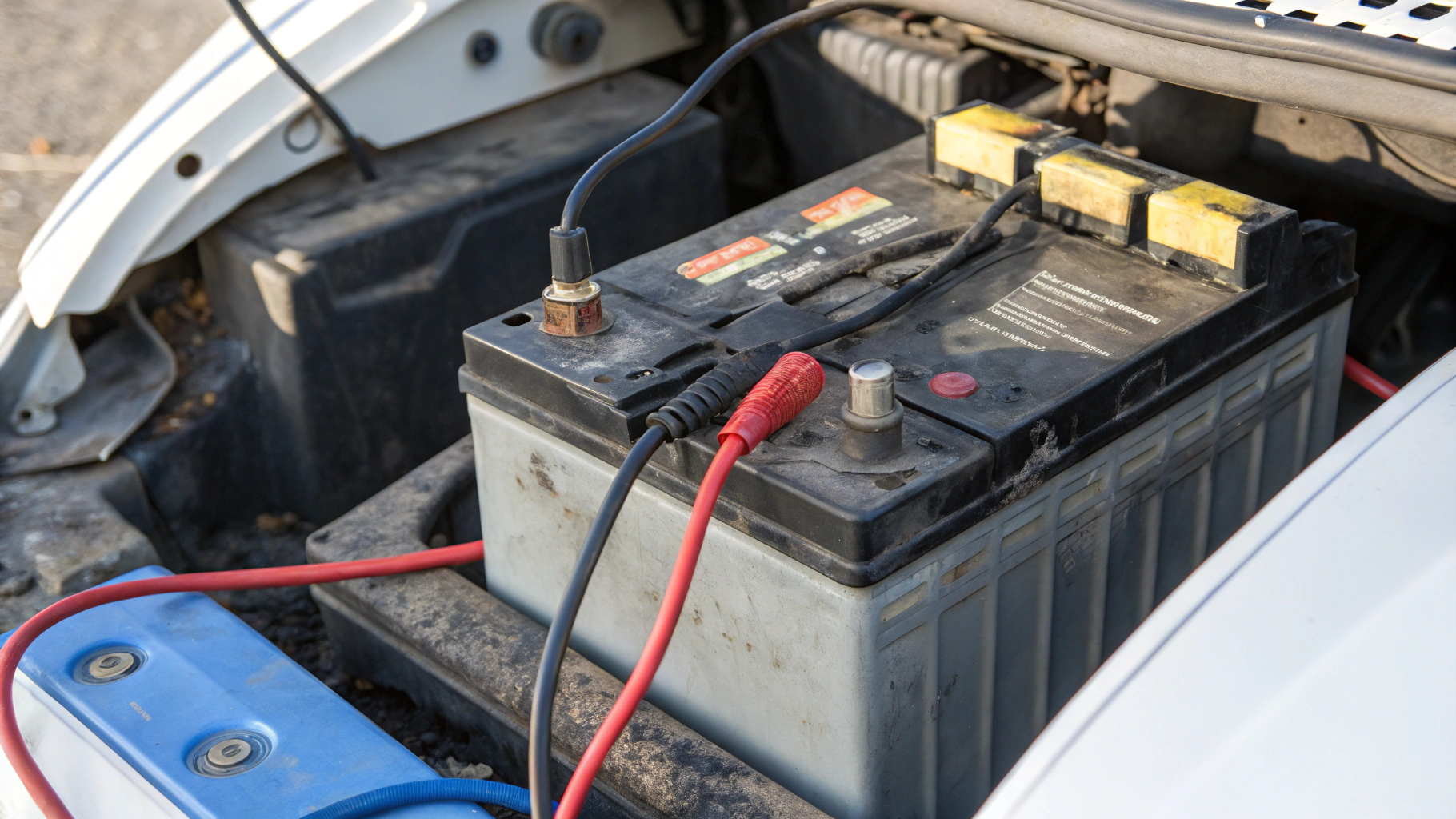
Diving into the realm of lithium-ion batteries for the first time was nothing short of an exhilarating adventure; however, the intricacies surrounding the concept of overcharging struck me as both captivating and intimidating. Could it be possible that these cells, heralded as the epitome of cutting-edge technology, harbor the potential for perilous outcomes when subjected to excessive charging? As I delved deeper, I was met with a categorical affirmation: Yes, indeed! Overcharging transpires when the voltage exceeds a precarious threshold, generally hovering around 4.2 volts, and this deviation can spawn grave safety concerns.
A particular instance remains etched in my memory—one of my friends recounted the startling incident of their cellphone battery swelling unexpectedly. This alarming manifestation is a clear indicator of overcharging, and it ignited my curiosity, driving me down the rabbit hole of research on battery safety. The mechanics revealed that when a battery is pushed beyond its limits, it generates a dangerous amount of heat, which can trigger a thermal runaway—a cascading chain reaction that risks the battery swelling, leaking, or even exploding.
Awareness of these risks prodded me into action; I adopted several proactive strategies to combat overcharging, including the use of original chargers and the habitual monitoring of battery health. By managing our devices with vigilance, we can significantly mitigate these threats to safety. If you find yourself reliant on lithium-ion batteries—whether in gadgets or electric vehicles—ensure that your charging apparatus and protective measures function optimally to avoid such daunting risks. Believe me, it’s a commitment that pays off immensely.
In essence, the specter of overcharging looms over lithium-ion batteries, potentially ushering in serious hazards like fires or diminished battery longevity. Employing certified chargers and maintaining robust battery management systems are essential preventative strategies to navigate this perilous landscape.
Understanding Overcharging and Its Safety Implications
Have you ever wondered about the risks associated with charging your lithium-ion batteries? As I explored the intricacies of battery charging, I discovered that overcharging, which occurs when voltage exceeds about 4.2 volts, can indeed present serious safety hazards. These hazards include battery swelling, leaks, or even explosions, which are triggered by excessive heat generation leading to thermal runaway. To prevent these dangers, it is crucial to use certified chargers and regularly monitor battery health.
| Risk | Cause | Prevention |
|---|---|---|
| Battery Swelling | Overcharging beyond 4.2 volts | Use original chargers and monitor battery health |
| Thermal Runaway | Excessive heat generation | Maintain robust battery management systems |
| Explosions | Structural failure from overcharging | Employ safety protocols when charging |
Overcharging lithium-ion batteries is completely safe at all times.False
This statement is false; overcharging can cause serious hazards.
Overcharging lithium-ion batteries can lead to thermal runaway incidents.True
True, this happens when batteries exceed safe voltage limits.
Recap of Risks Associated with Overcharging
Traversing the convoluted maze of overcharging hazards is essential for businesses striving to uphold their integrity. The ramifications of such practices are diverse: ranging from monetary repercussions to legal entanglements, each element jeopardizes operational coherence. The menace of overcharging—encompassing customer grievances and eroded trust—has the potential to undermine brand equity. Adopting formidable preventive measures is imperative; however, mere awareness falls short without pragmatic strategies to address these risks, ensuring a delicate balance in billing practices. Grasping the nuances of overcharging liability and its repercussions on consumer confidence is vital. Maintaining vigilance is key to thwarting overcharging and preserving corporate reputation.
Importance of Following Best Charging Practices
In this technologically saturated age, mastering superior charging methodologies is essential. Grasping the significance of charging behaviors profoundly influences the longevity of our devices. For smartphones, adhering to charging guidelines and expedited charging techniques fortifies battery health. Prioritizing charging safety not only secures personal well-being but also maximizes gadget performance. Furthermore, adopting electric vehicle charging protocols promotes an eco-friendly driving ethos. Sidestep the adverse effects of improper charging by integrating cutting-edge charging strategies and sustainable power practices. Ultimately, excelling in device charging optimization encompasses a savvy approach to charging frequency and techniques, enhancing battery lifespan and facilitating effective smartphone battery maintenance.
Influence of Correct Charging on Battery Longevity
The longevity of batteries is intricately tied to optimal charging practices. By embracing proper techniques, users can notably prolong their batteries’ lifespan. Charging cycles necessitate a scrupulous approach, especially with lithium-ion batteries. Employing intelligent charging methodologies alongside a comprehensive battery management system not only boosts energy efficiency but also mitigates degradation. Regularly implementing these effective charging strategies diminishes their adverse impacts. Thus, grasping the nuances of rechargeable batteries and adopting health tips is essential to sustain battery vitality, ensuring best practices in charging and mobile battery upkeep.
Conclusion
In summary, our exploration into the realm of lithium-ion batteries reveals both their remarkable convenience and the inherent risks associated with improper charging practices, particularly overcharging. With the critical voltage threshold of 4.2 volts serving as a key boundary, it is essential to recognize that excessive charging can lead to serious safety hazards, including thermal runaway and battery swelling. It’s clear that while modern Battery Management Systems are designed to mitigate these risks, responsible user practices remain fundamental to ensuring battery safety and longevity.
Moving forward, it is paramount for users to adopt effective strategies to prevent overcharging. This includes investing in smart charging technology, using compatible chargers, and consistently monitoring battery health. By implementing these recommendations, users can not only protect their devices but also prolong battery life. Furthermore, gaining insights into the benefits of LiFePO4 batteries offers an eco-friendly alternative that emphasizes safety and efficiency. Let us leverage this knowledge to enhance our experiences with lithium-ion technology and promote safer charging habits for all.


